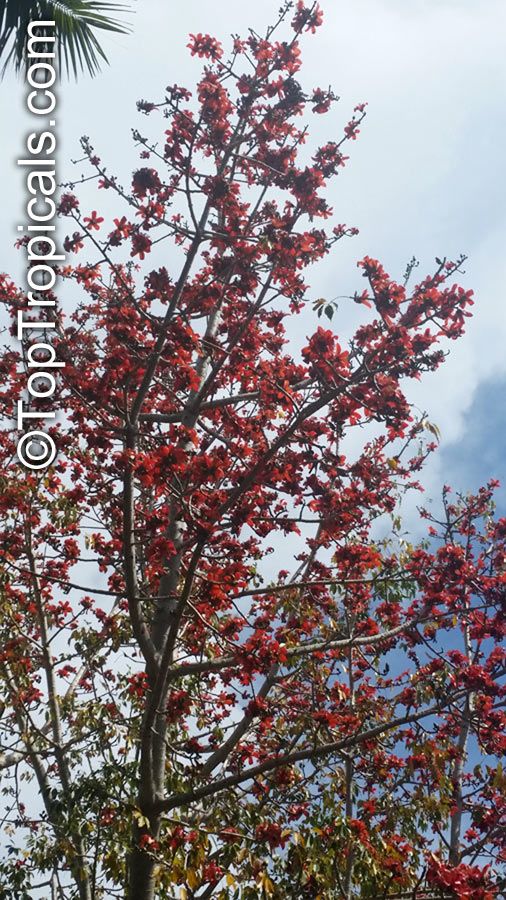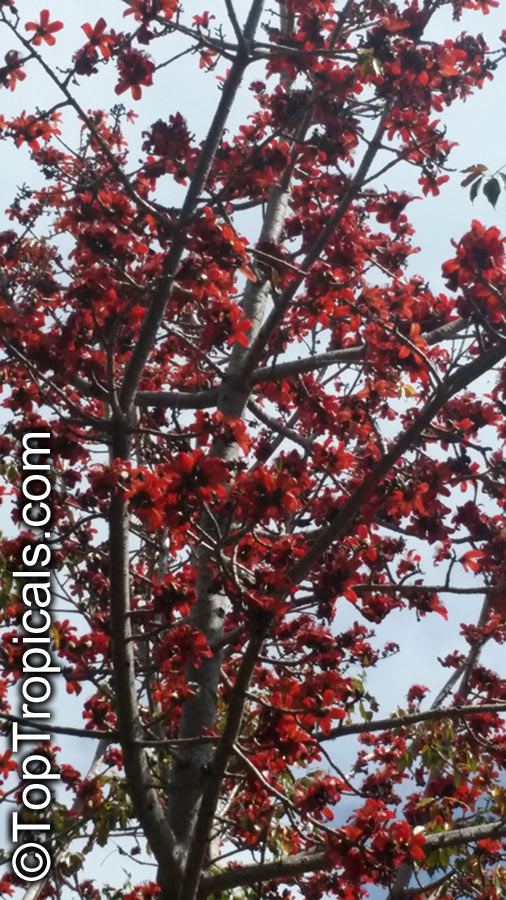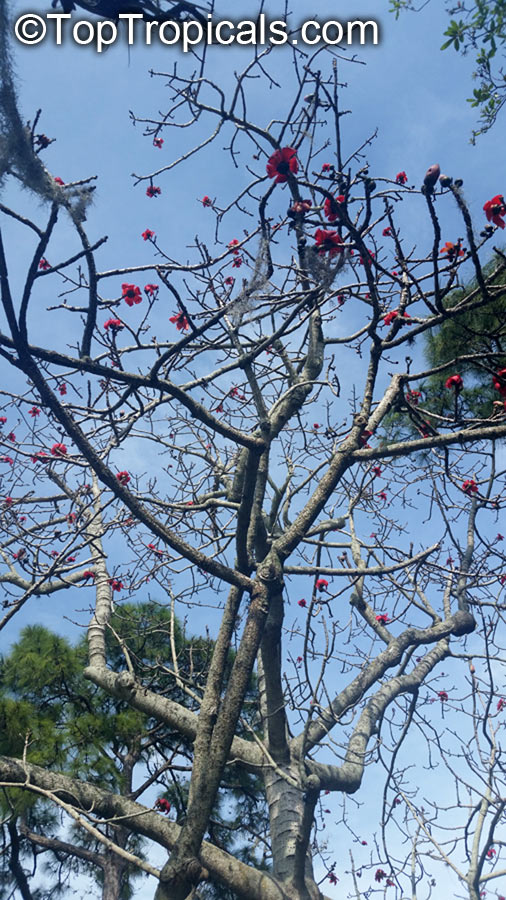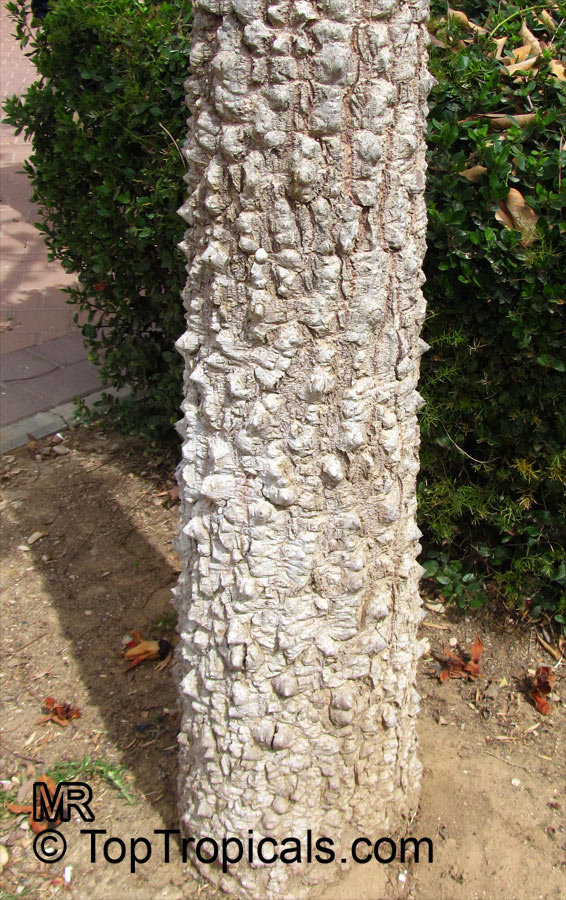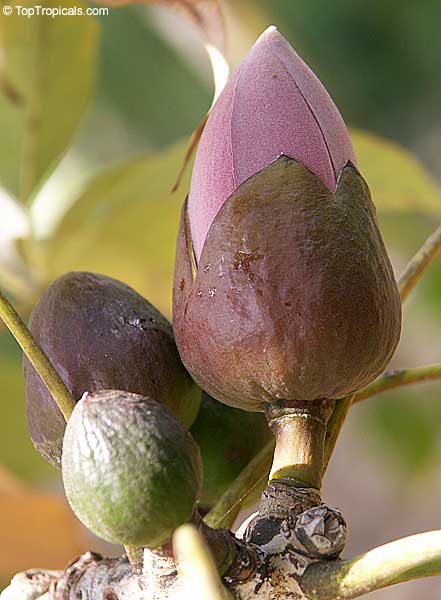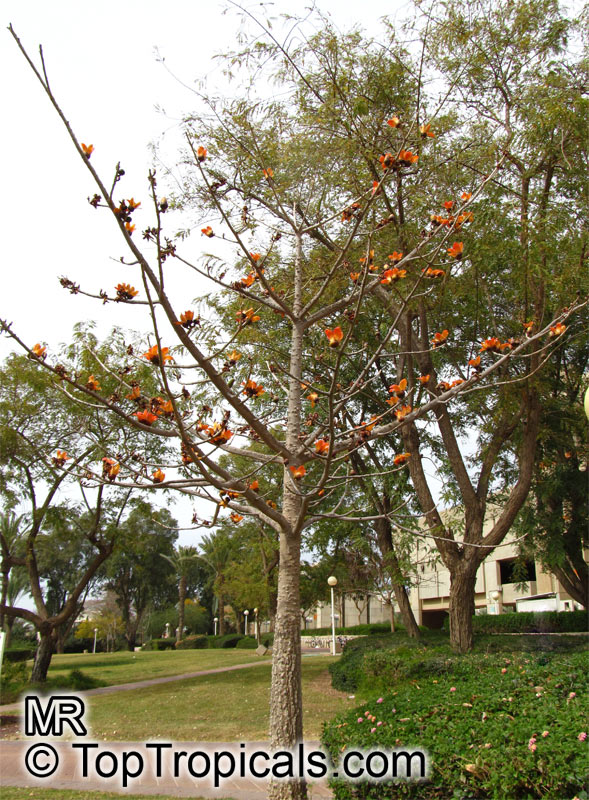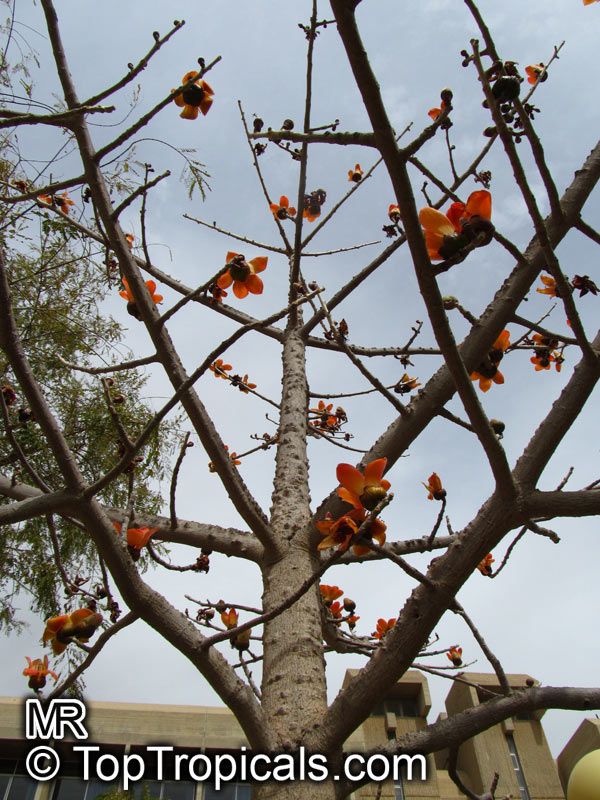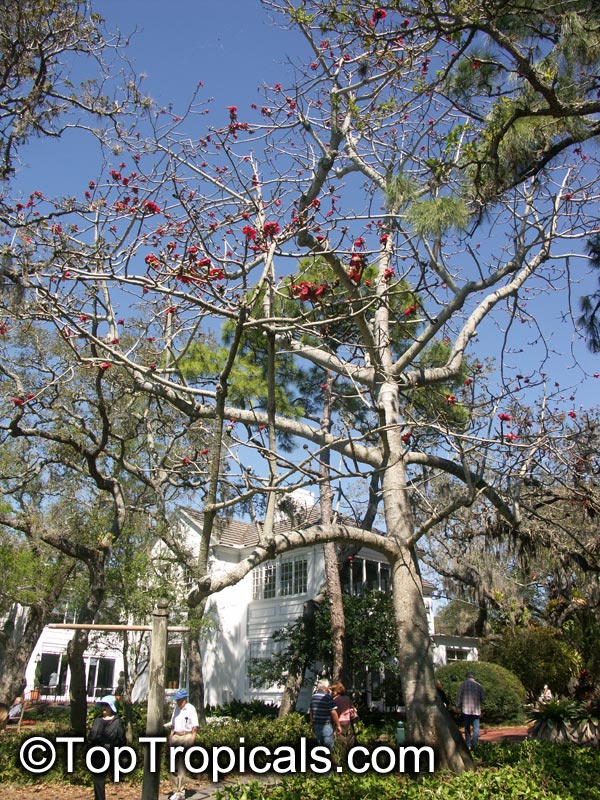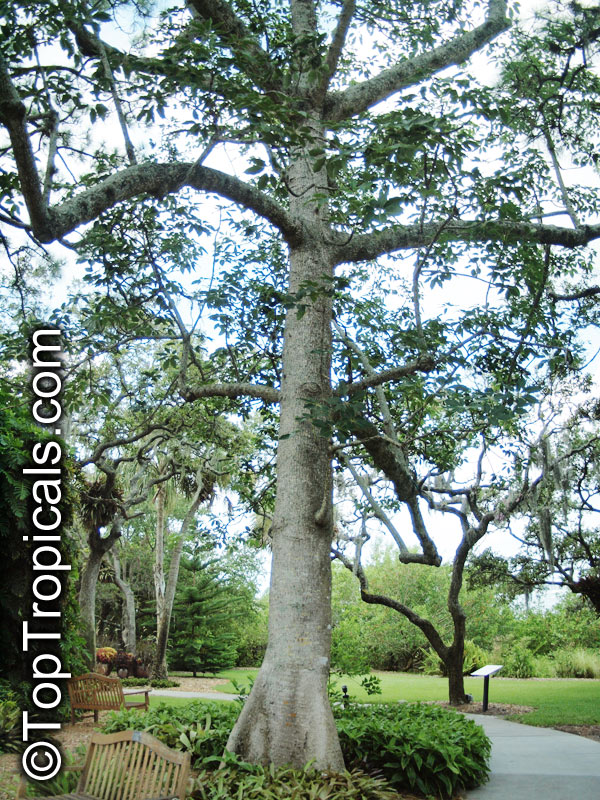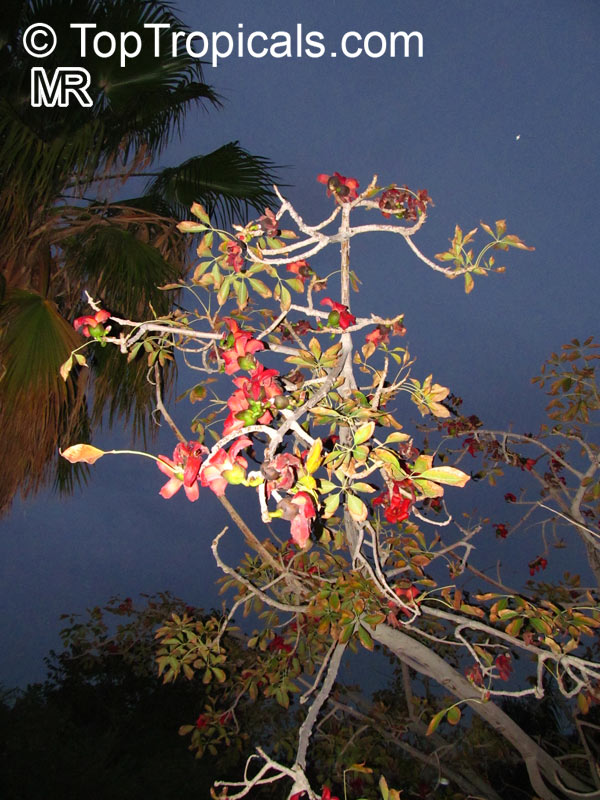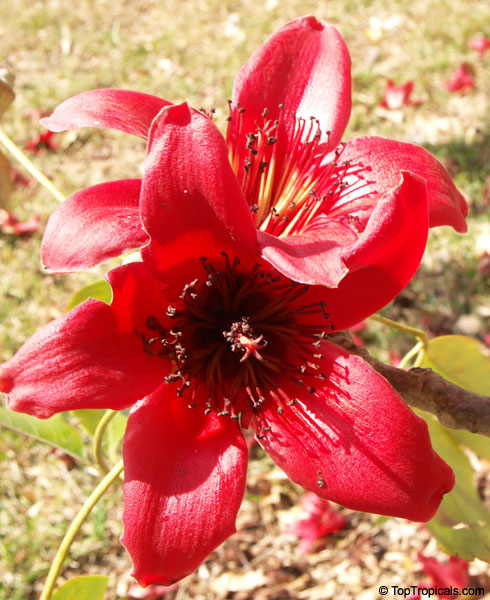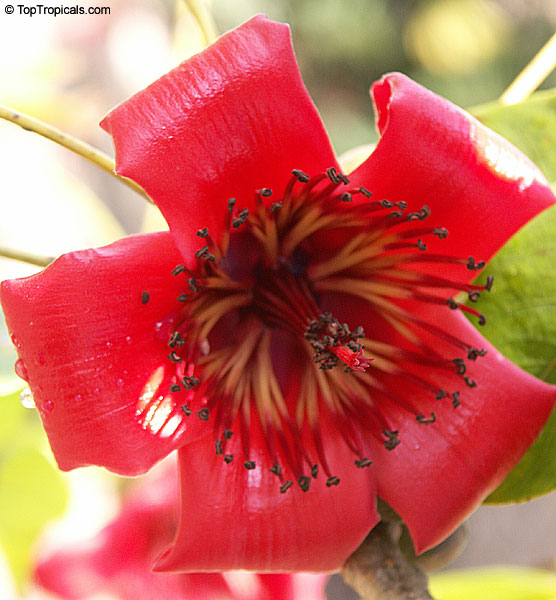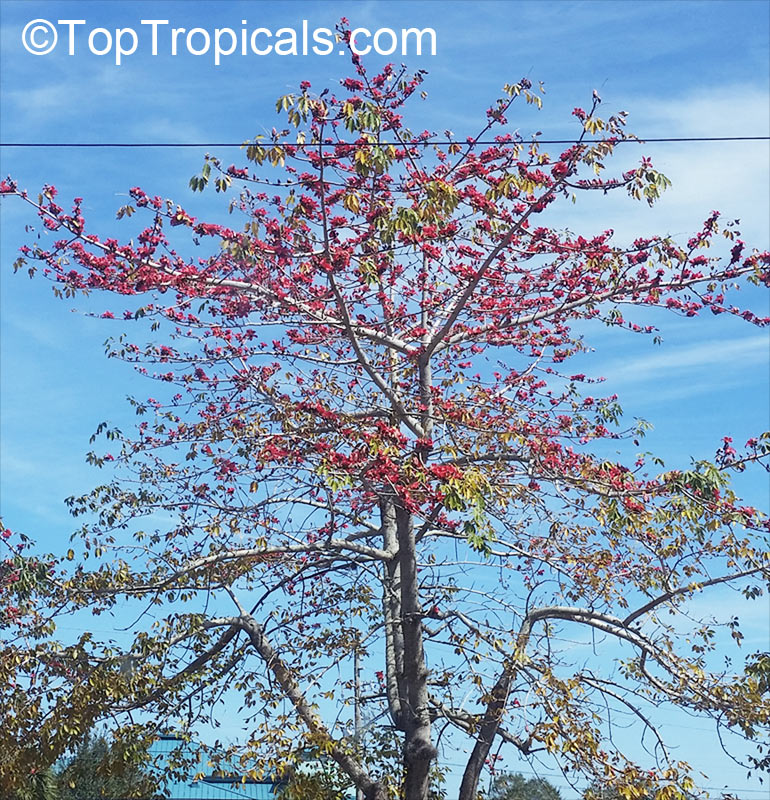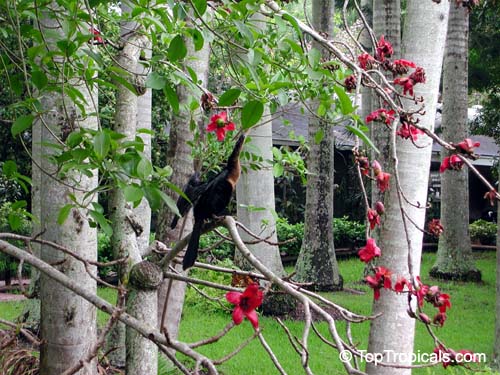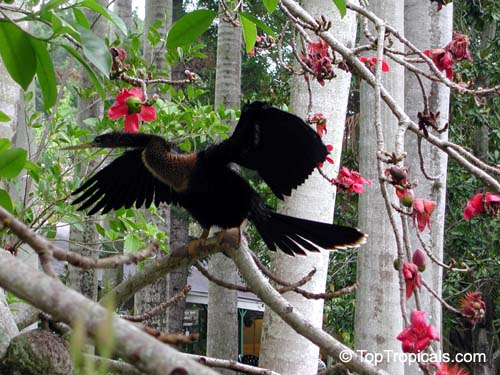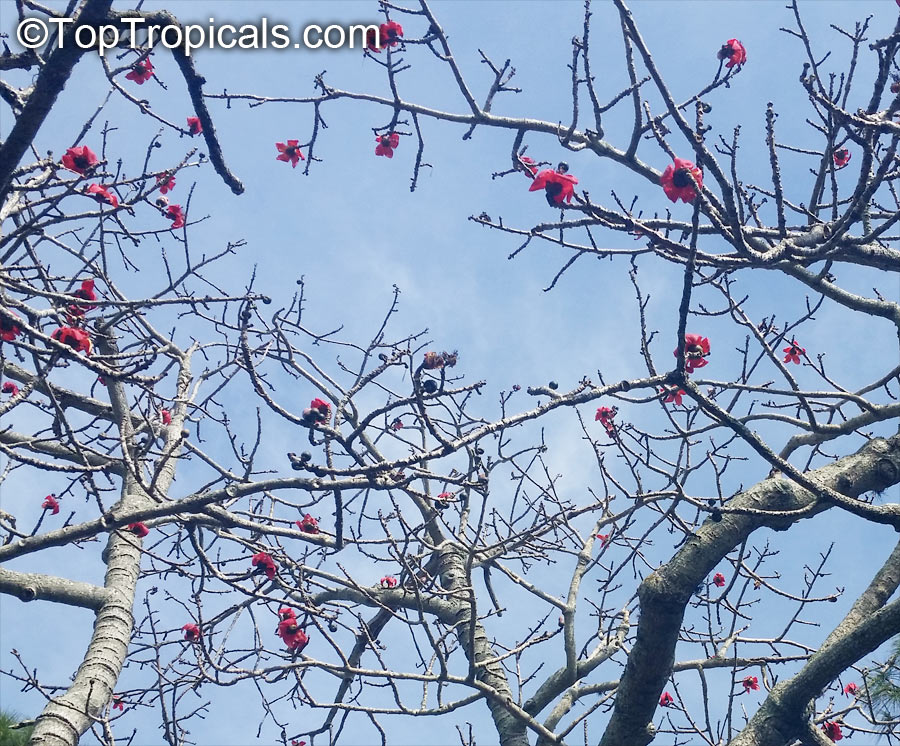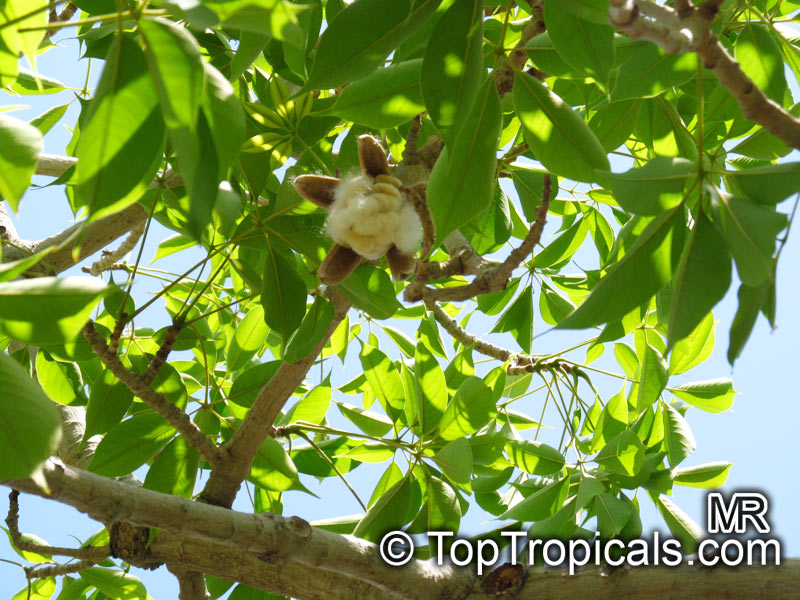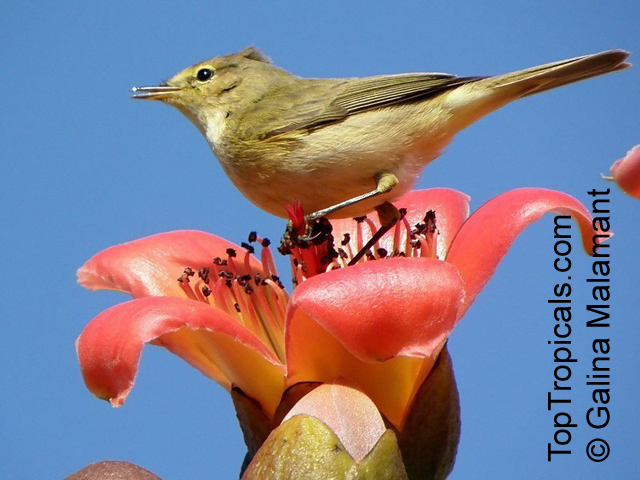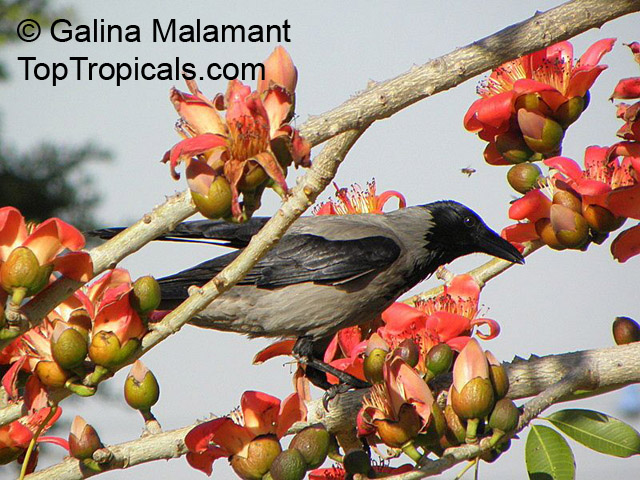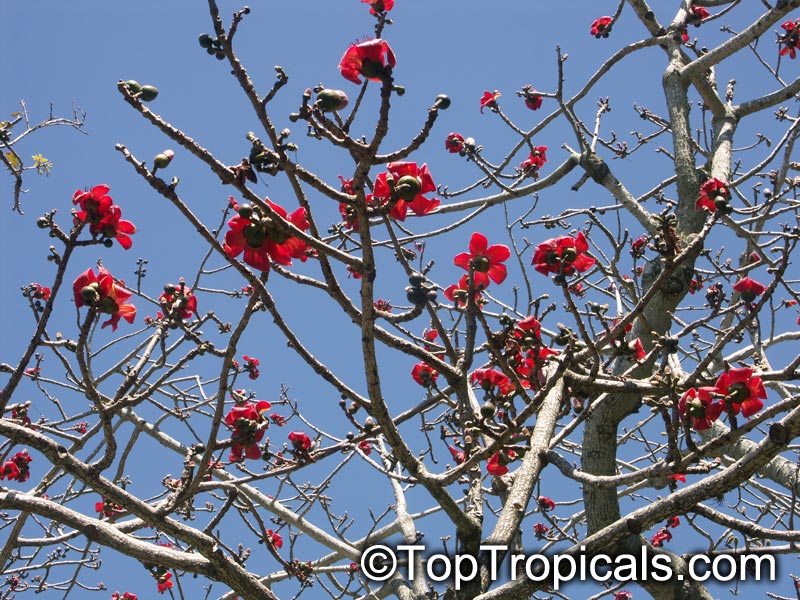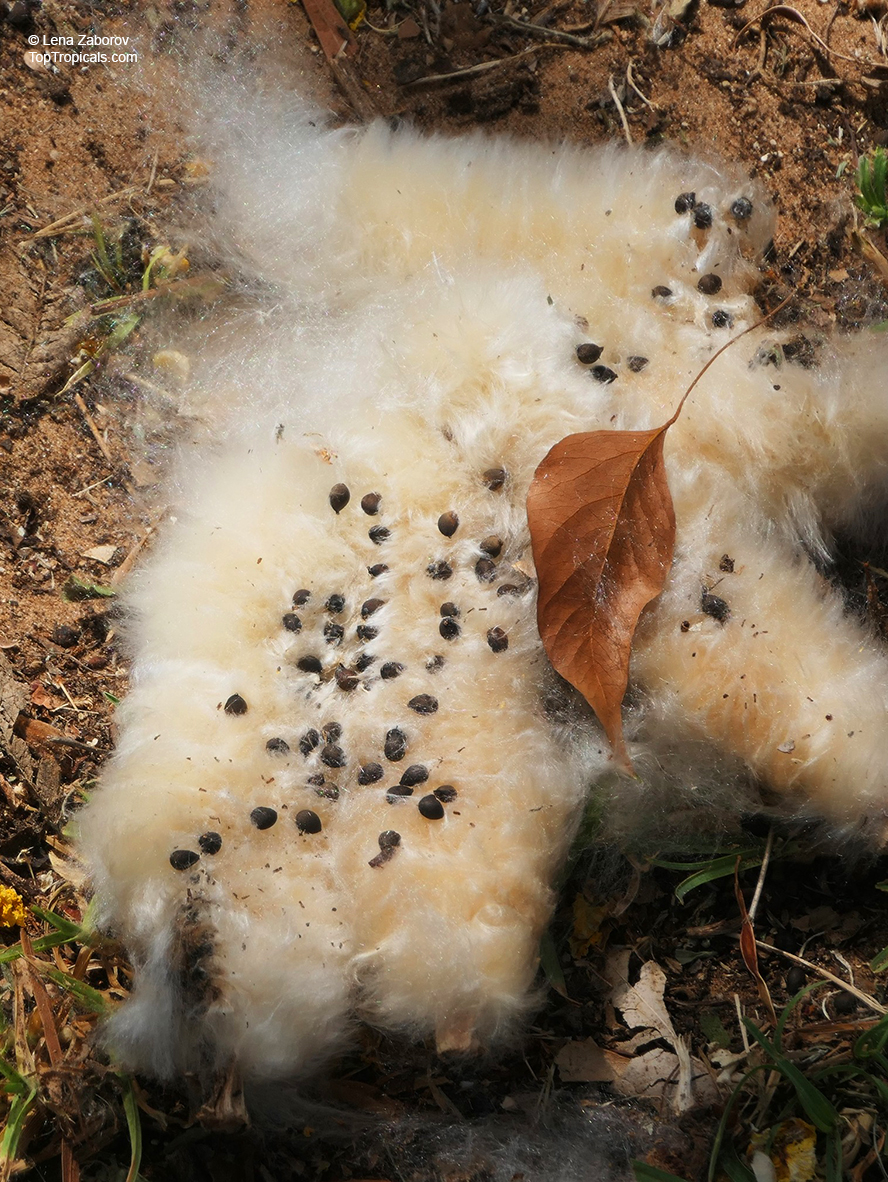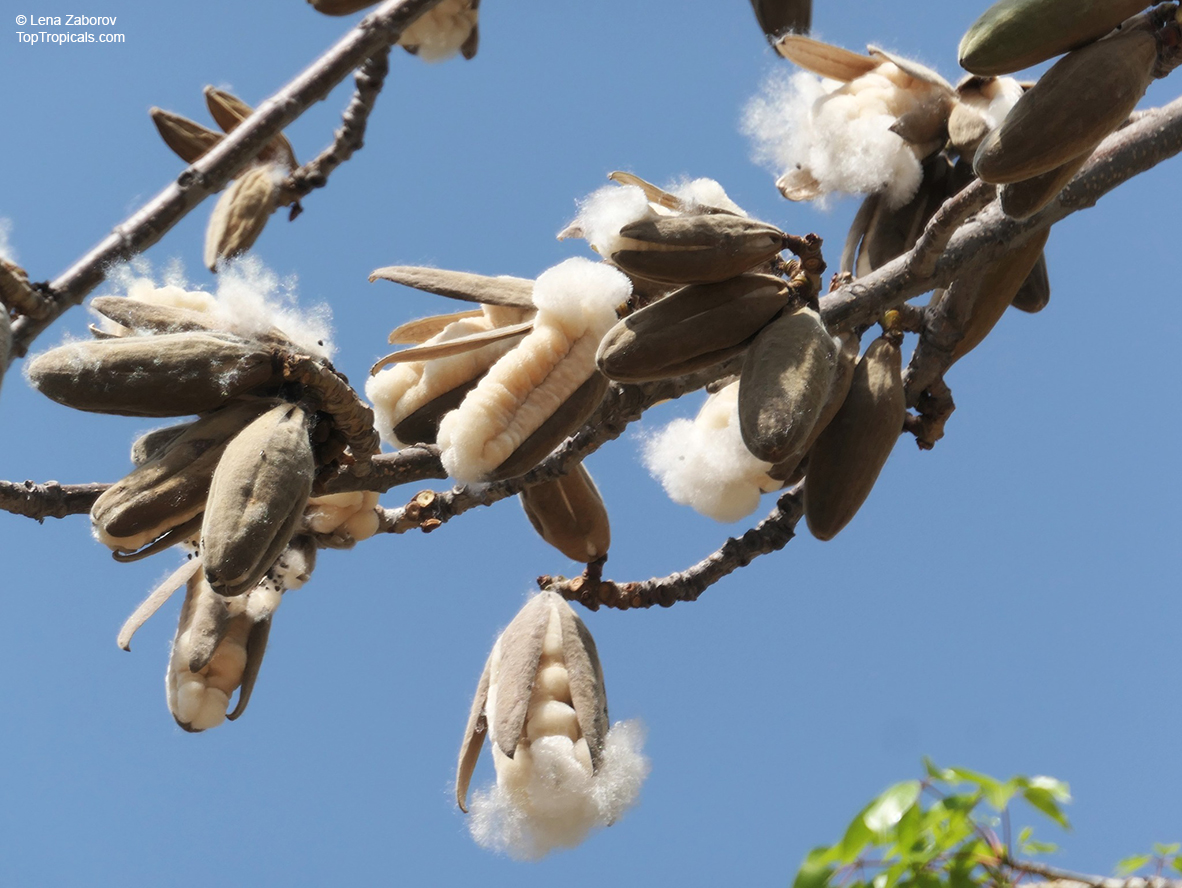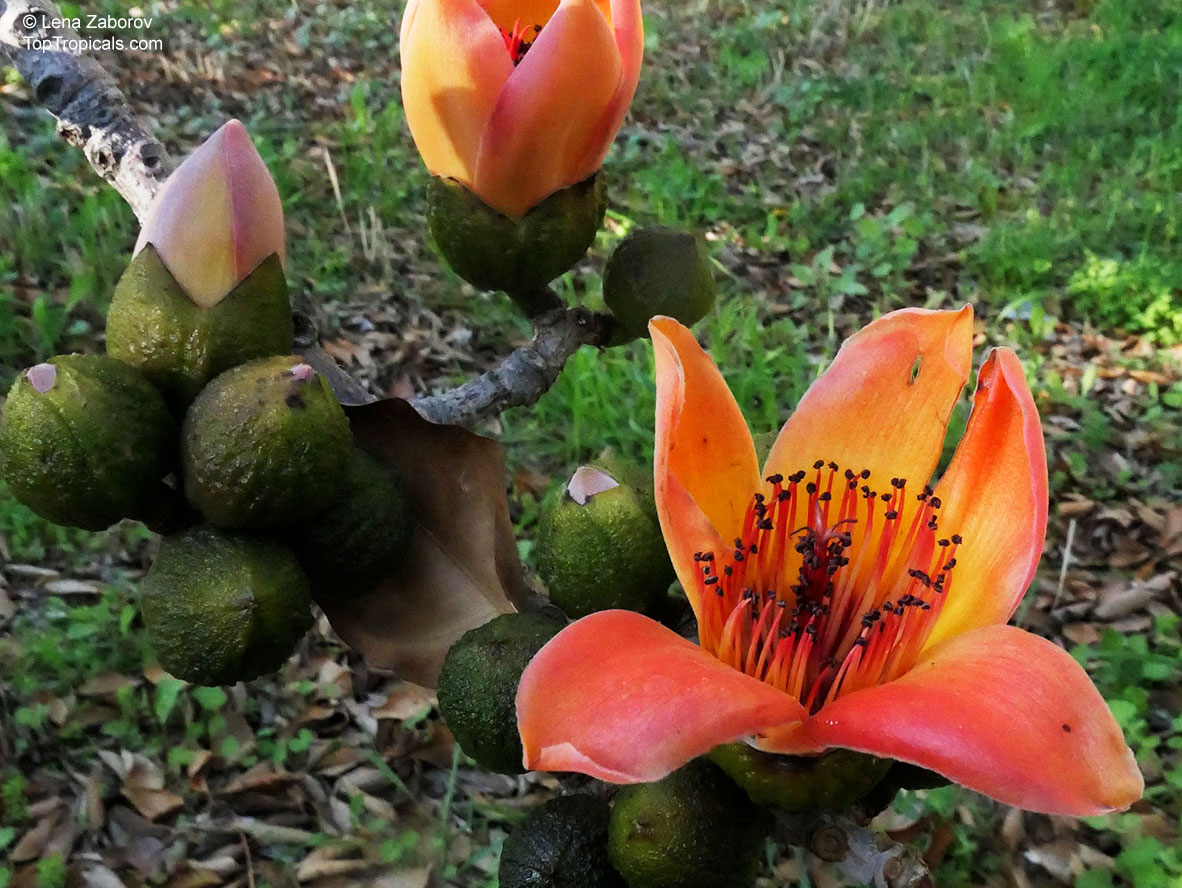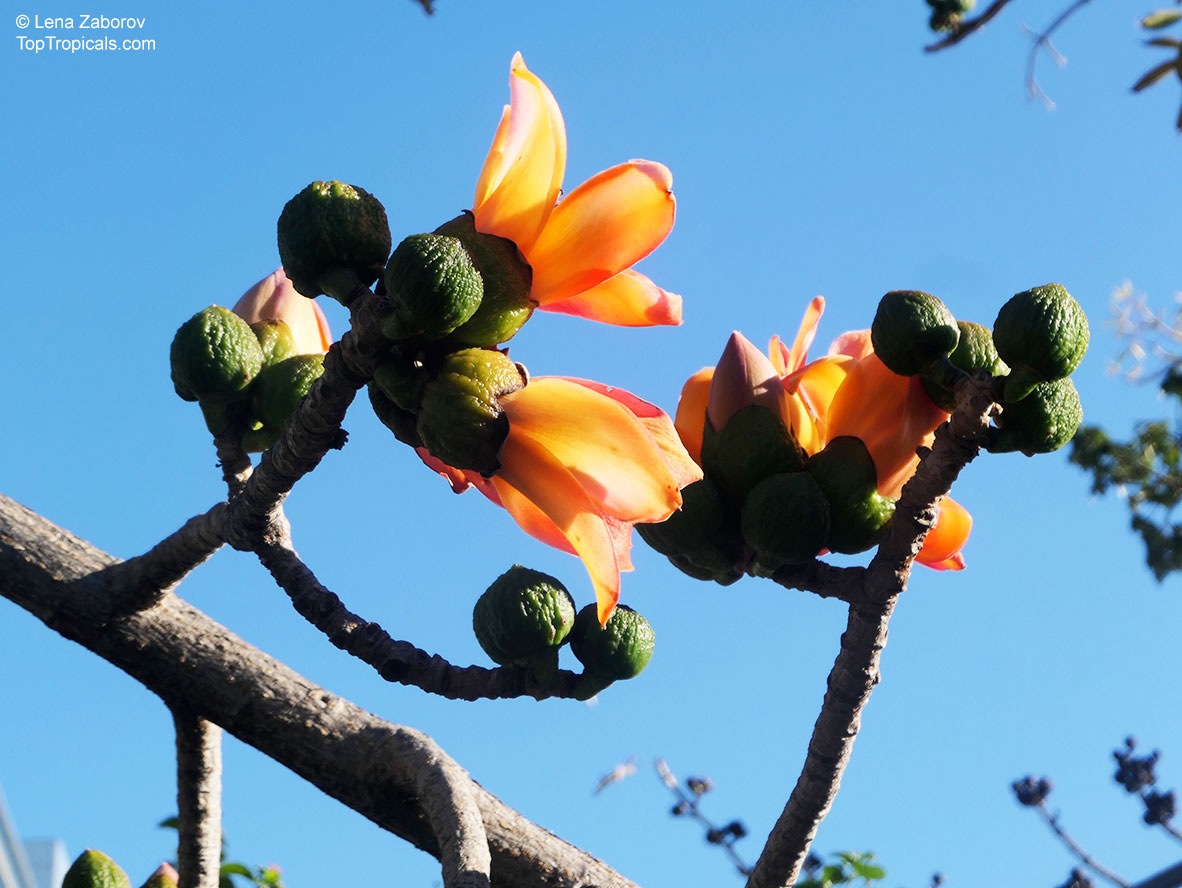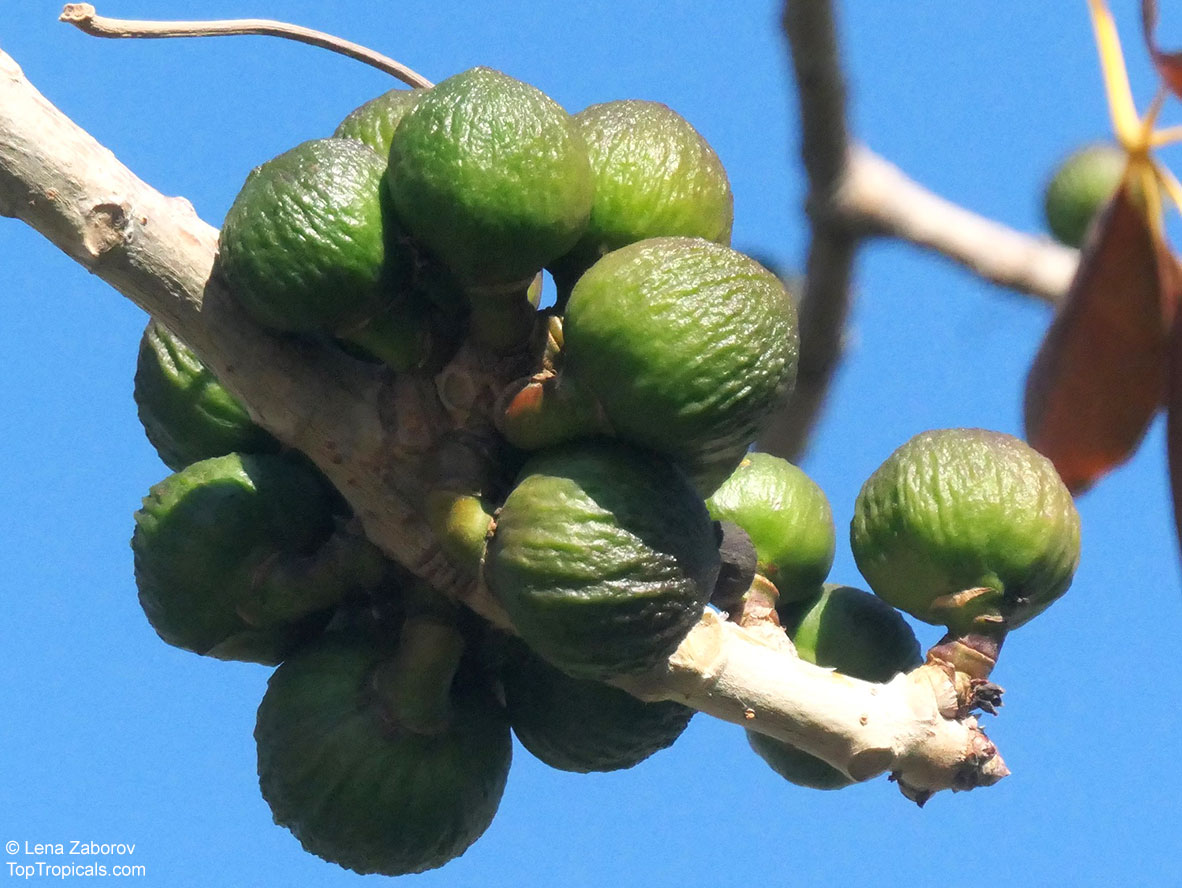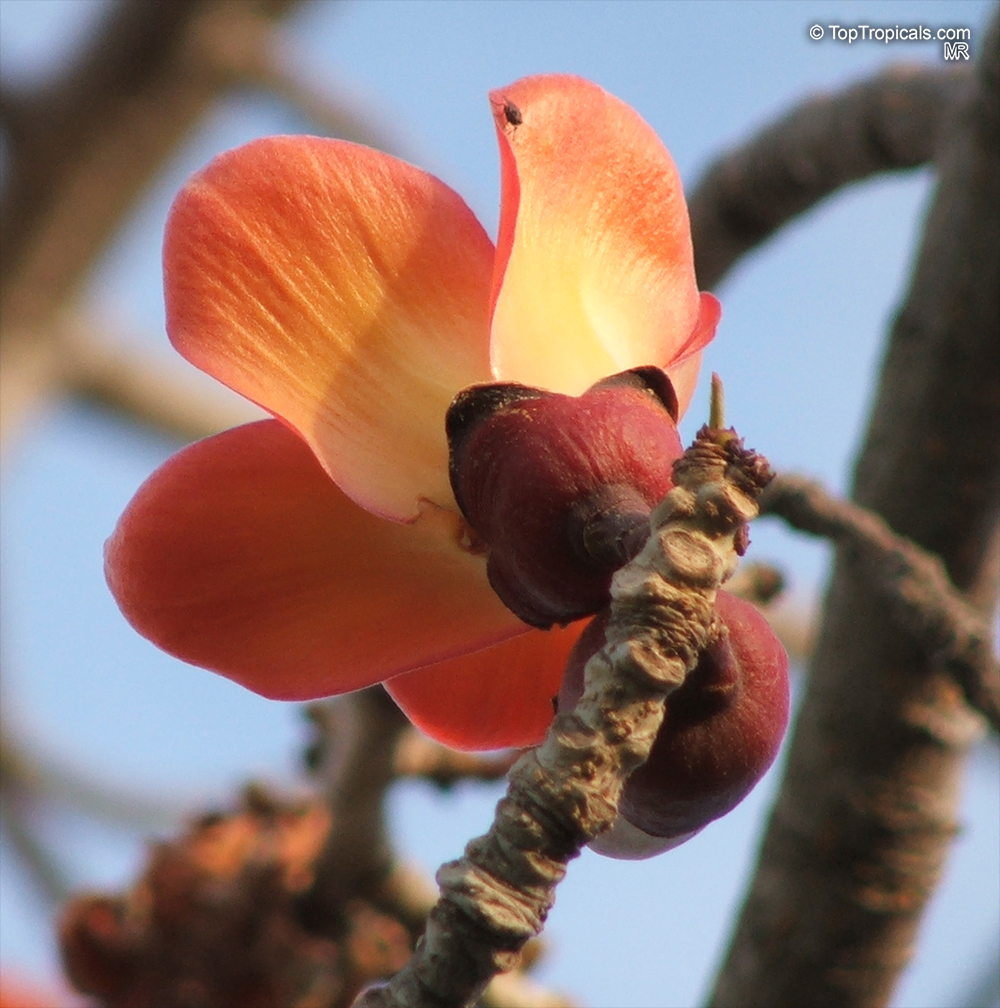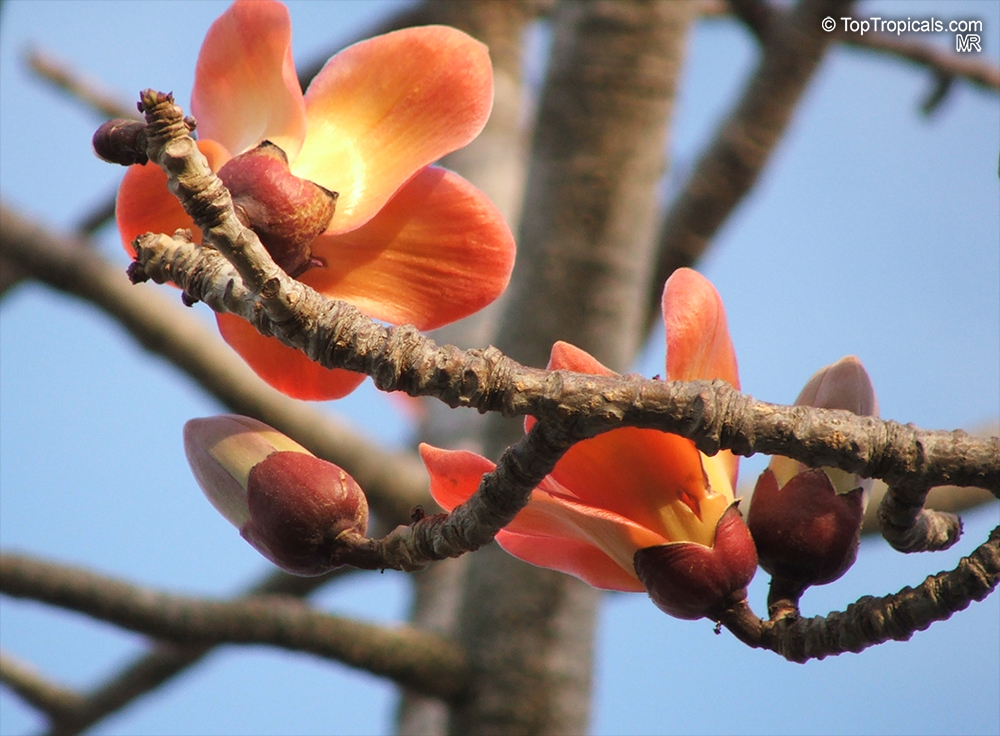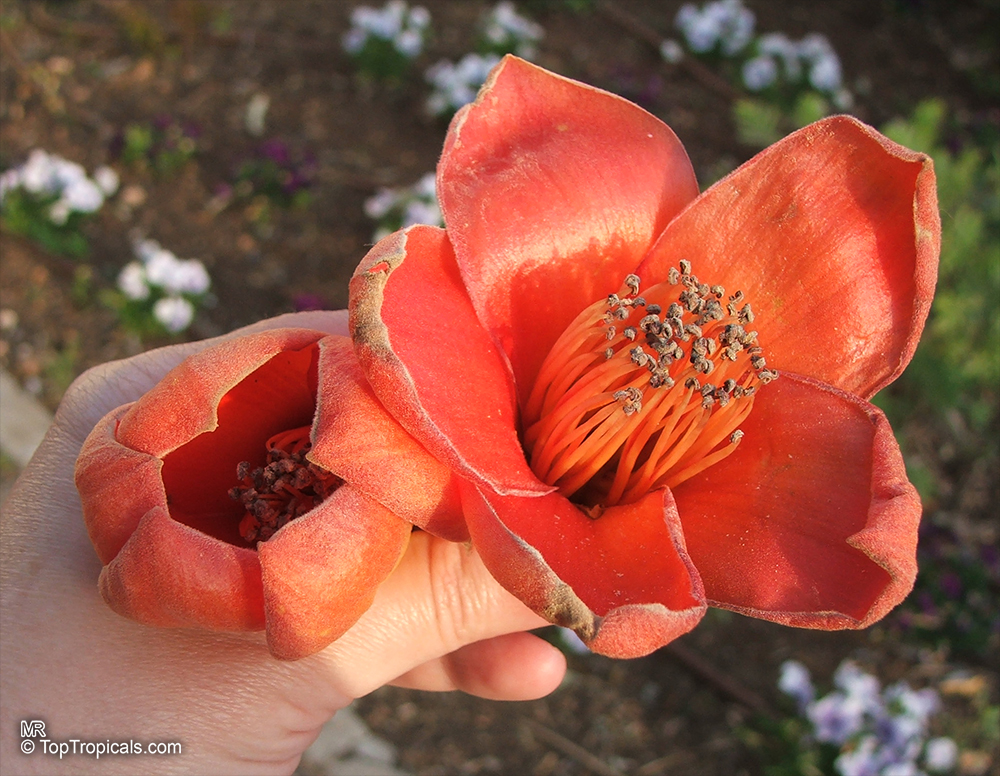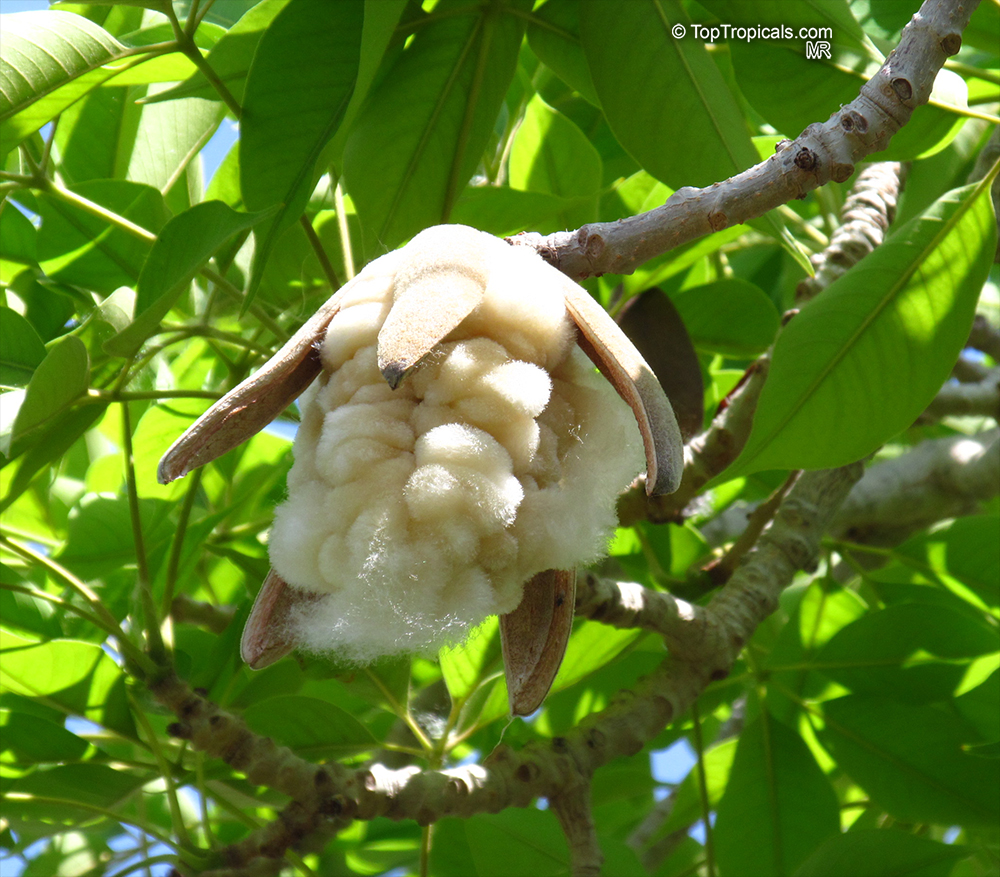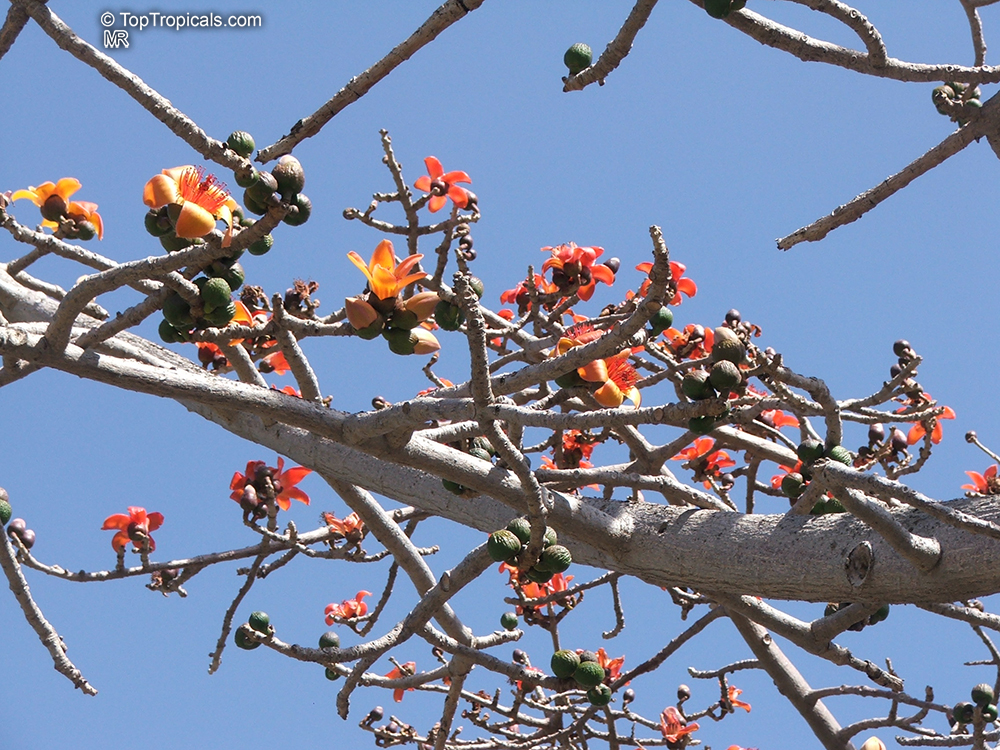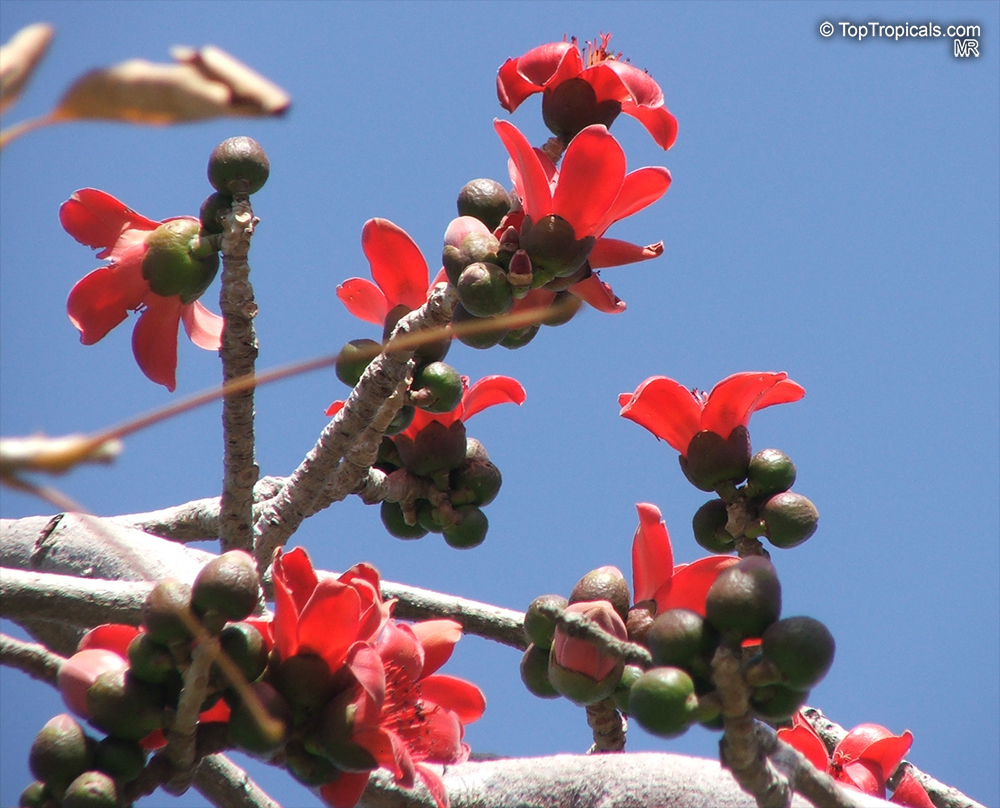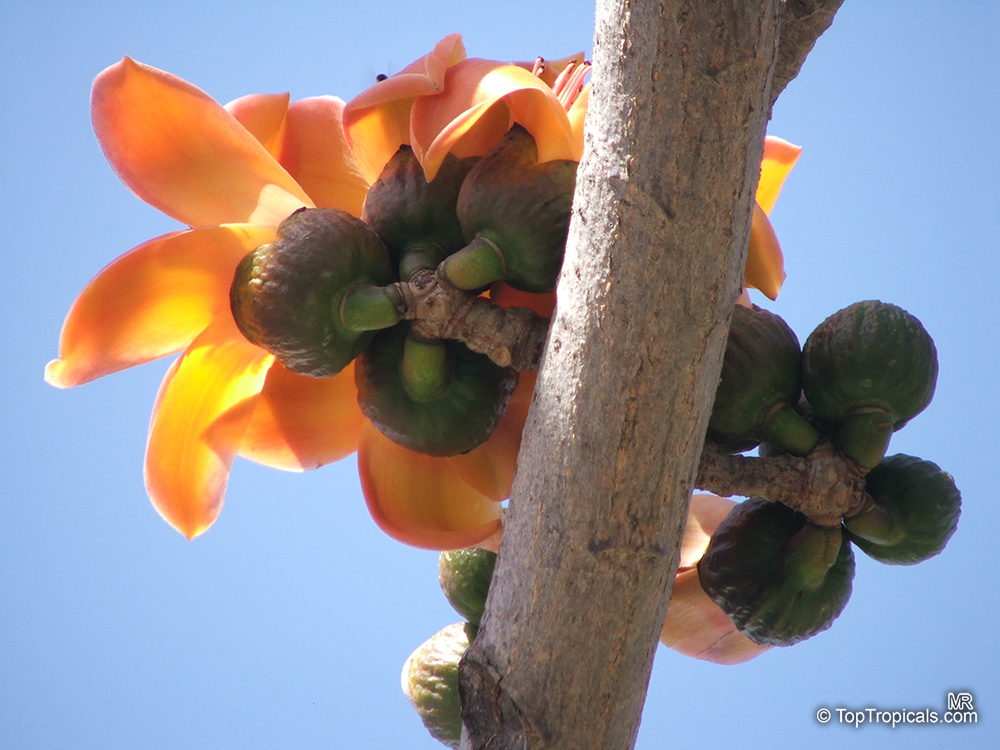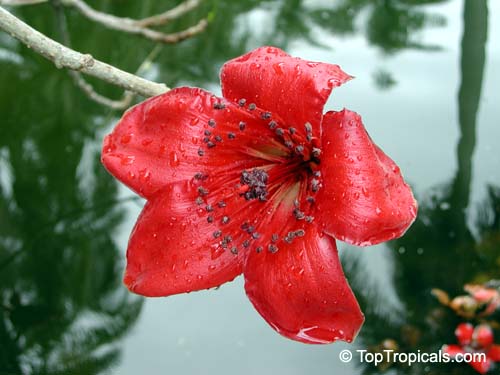Bombax ceiba, Salmalia malabarica, Bombax malabaricum
Kapok tree, Silk Cotton TreeFamily: Malvaceae (Formerly:Bombacaceae)
Subfamily: Bombacoideae
Origin: Tropical Asia







Kapok tree is a remarkable tree with spectacular display of bright red flowers, which bloom during the spring season. The flowers are large, showy, and have a sweet fragrance, making them popular with birds and insects. The tree's blossoms are also used in traditional medicine for their medicinal properties.
Red Kapok tree is valued for its strong and lightweight wood, which is used for making furniture, canoes, and even musical instruments. Its bark and leaves are also used for various purposes in traditional medicine and textiles.
Red Kapok tree is significant in Hindu mythology, where it is believed to be a symbol of Lord Indra, the god of rain and thunderstorms. In some regions, the tree is also considered sacred and worshipped during festivals and ceremonies.
Overall, the Bombax ceiba, or Red Kapok tree, is a magnificent and culturally significant tree that is cherished for its beauty, utility, and spiritual importance.
Bombax ceiba typically grows up to 20 to 30 ft tall and wide, but can reach up to 40 ft in the right conditions. It has a heavily buttressed trunk, which may have spines on young trees. It has large, lobed leaves and large, red, crimson or vinous lily-like flowers which appear in the winter. At that time masses of large appear and the tree is then completely void of leaves. The woody fruits contain silky floss used in pillows, etc.
This tree is best grown in full sun and likes regular water. This hardy plant is cold tolerant to at least 30s F for a short period of time, making it suitable for USDA Zones 9-11. It is a great addition to gardens as it attracts butterflies and hummingbirds.
For planting in cold regions, it is best to use a large pot to ensure the tree doesn't experience cold shock from any sudden shifts in temperature. The pot should be kept in a sheltered area to protect it from the cold, and it should be watered regularly throughout the winter season. Additionally, mulch can be used to help insulate the root system.
Similar plants:
Recommended Fertilizer: SUNSHINE Megaflor - Bloom Nutrition Booster
